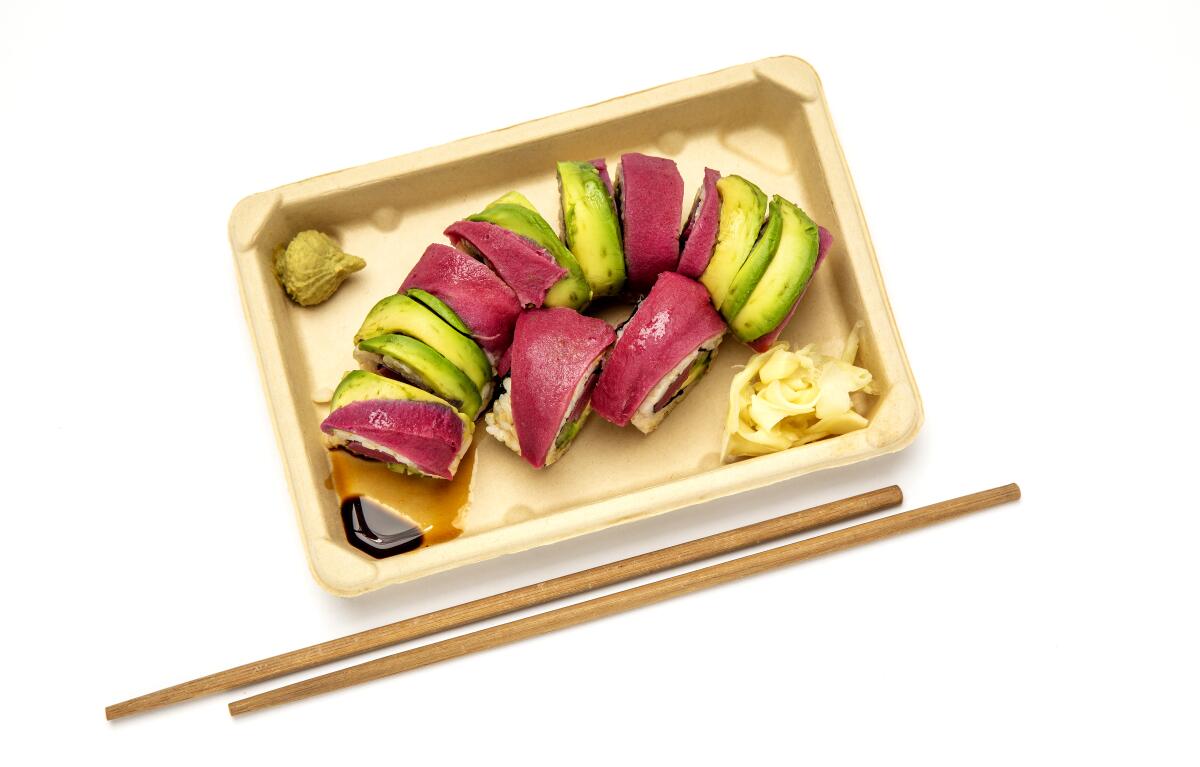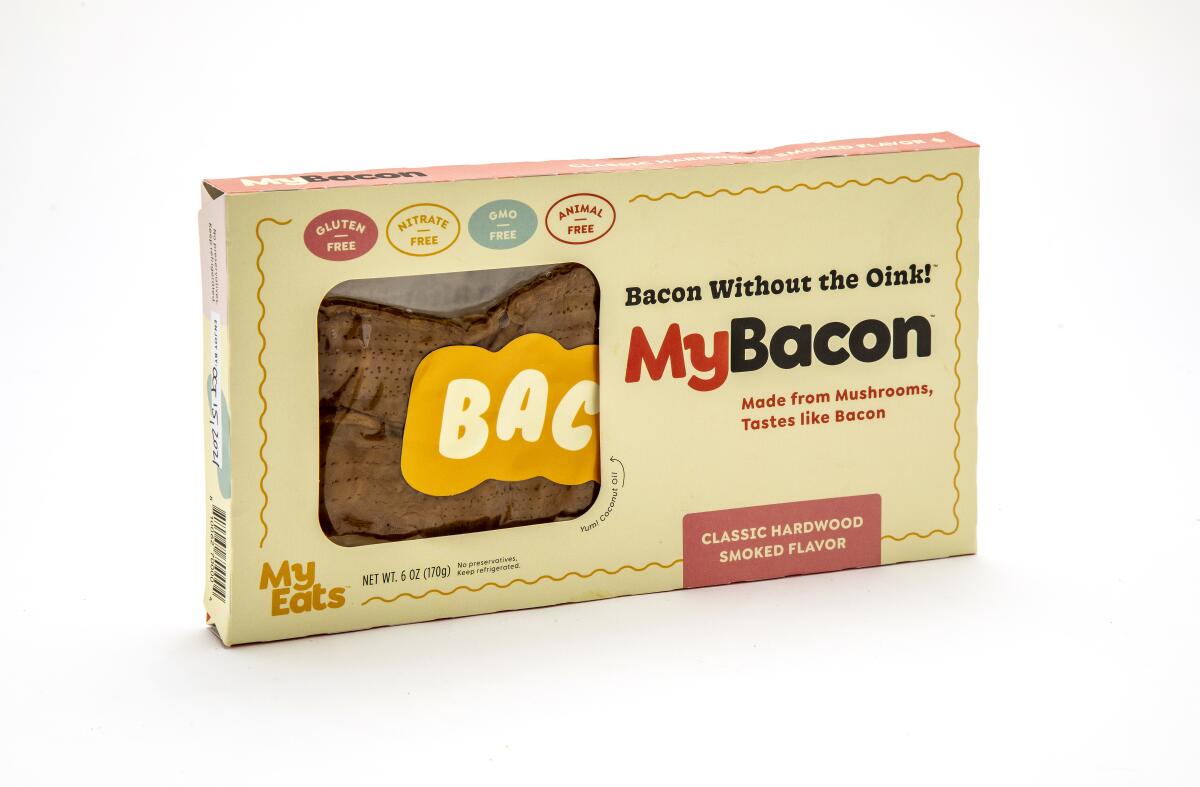Is fake meat about to take over your table?

Several years ago, I read a story in Pacific Standard magazine under the headline “The Biography of a Plant-Based Burger.” The lead character was a burger, of course, but close on its heels was Patrick O. Brown, a “graying, bespectacled, 62-year-old Stanford University professor” who, after a sabbatical dedicated to “eliminating industrial meat production,” decided he would come up with a way to make plant-based meat.
Rowan Jacobsen’s mesmerizing article detailed how that idea evolved into a product you could cook on the grill this weekend. And it was his description of Brown’s challenge — to make a product that has the umami flavor we crave — that stayed with me. “Beef contains hemoglobin,” Jacobson wrote, “the secret catalyst that transforms flesh into yum.” Brown and his team eventually figured out how to get that yum without using any meat.
Enjoying this newsletter? Consider subscribing to the Los Angeles Times
Your support helps us deliver the news that matters most. Become a subscriber.
Brown, whose CV is crowded with scientific achievements, became the founder and CEO of Impossible Foods, which, along with Beyond Meat, has proved that meat lovers will give alternative proteins a chance — at least sometimes. Their success has inspired thousands of alternative-protein startups worldwide, and many of them are in California. With so many new products on the market and others waiting in the wings, it was the perfect time for the Food section to document this modern-day gold rush of entrepreneurs.
Corie Brown, a former member of The Times’ Food and Business staffs, immersed herself in the “fast-expanding array of meat mimics — plant-based, cultured and fungi-based — that are quickly evolving as producers push to match the nutrition, taste, look, feel, smell and cost of conventional meat.”

Alternative proteins “are an entrepreneurial approach” to curbing greenhouse gas emissions and dismantling industrial animal agriculture, Corie explains, and the people behind the new products are, typically, “dedicated vegans.” In the meantime, some of the globe’s largest purveyors of conventional meat are getting in on the act too.
And what exactly is everyone getting into?
Plant-based meats have been around for a while, and they dominate the alt-protein category — as evidenced by all the products you can find at the grocery store. You also can find them served up in a variety of restaurants, including California Pizza Kitchen and Chronic Tacos, all over Southern California.
Eat your way across L.A.
Get our weekly Tasting Notes newsletter for reviews, news and more.
You may occasionally receive promotional content from the Los Angeles Times.
Products (including bacon, chicken and steak) made from mycelium-based meat (mushroom stems and roots and the threads that make up nature’s fungal network) are just beginning to appear in commercial outlets. And cultured meat, which starts with a thimble full of animal cells, is on the horizon.
Right now, you are probably thinking: That’s all well and good, but what does it taste like? Can anything that’s not meat approach the pleasures of conventional sausage or bacon or sushi?

Food columnist Jenn Harris tested more than two dozen alternative proteins, evaluating them on appearance, texture, taste and how closely each one mimicked the original protein. “There are names you’ve heard of (giants that have pushed their products into every major grocery store chain and a growing number of fast-food restaurants) along with many newbies,” she explains.
Want some suggestions on which products to try? Want to know which one got a 9 out of 10? Which one reminded Jenn of dog treats? You can read her story (and watch a video) at latimes.com/food on Sunday.
It’s a brave new world out there in terms of alternative proteins, and we’re here to guide you through it.
Have a question?
Eat your way across L.A.
Get our weekly Tasting Notes newsletter for reviews, news and more.
You may occasionally receive promotional content from the Los Angeles Times.




